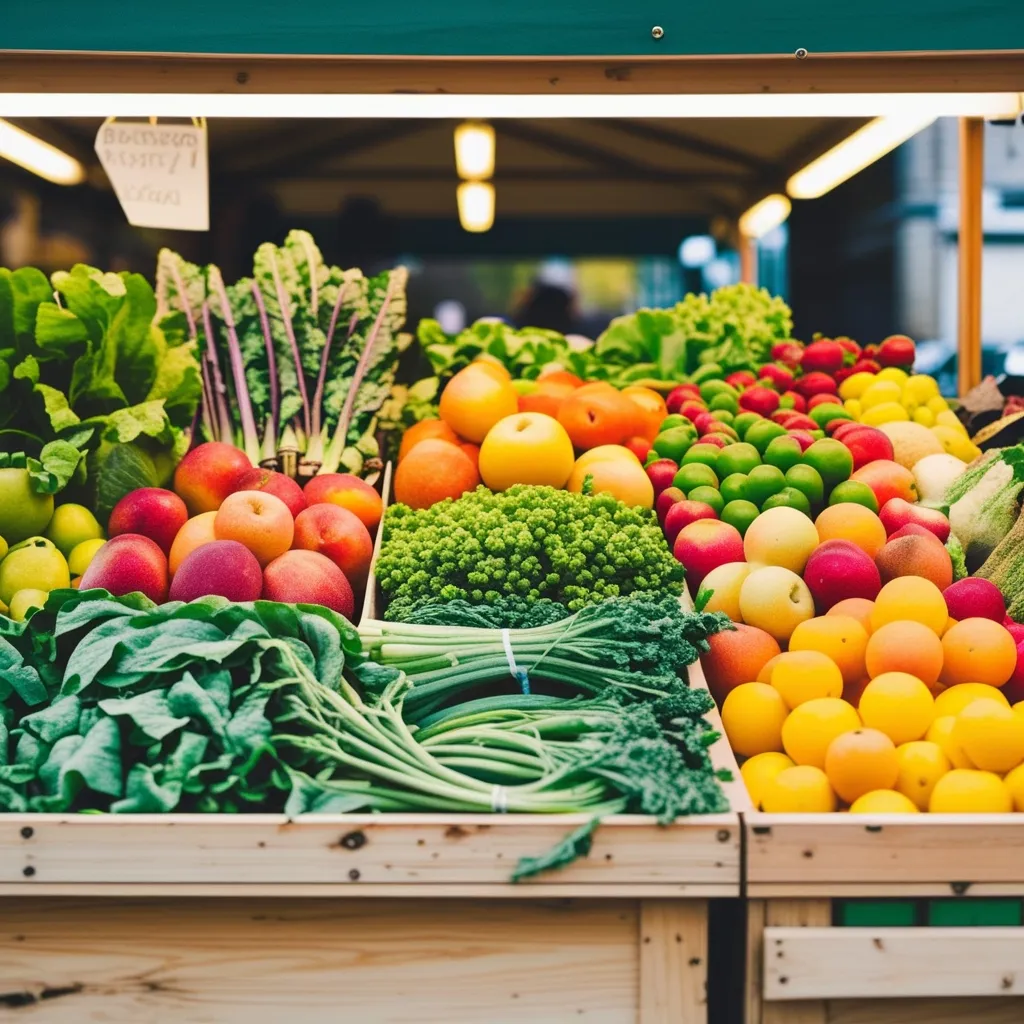Embracing Nature’s Bounty: Savoring Sustainable Meals with Local, Seasonal Ingredients
Life nowadays is all about speed and convenience. We grab what we can, when we can, and rarely stop to think about where our food actually comes from. But, there’s a growing trend among food lovers that’s advocating for something refreshingly different: eating local, seasonal ingredients. This approach is not only better for our health but also supports local farmers and helps the environment. Let’s break down the benefits and joys of planning our meals around the natural rhythm of each season.
The Seasonal Eating Buzz
Seasonal eating is about enjoying food that’s fresh from the harvest when it’s meant to be enjoyed. Back in the day, before advanced food storage and transportation methods, eating this way was simply how it was done. These days, it’s a bit of a lost art. Eating seasonably not only means enjoying a wider variety of fruits and veggies over the year but also tasting them at their absolute best. Trust me, a tomato fresh off the vine in summer beats a shipped-in, out-of-season one any day!
Health and Wallet Benefits
When produce is in season, it’s at its peak flavor and full of nutrients. Think of it like this: sun-ripened tomatoes in the heat of summer pack way more flavor and vitamins than those forced to grow in a hothouse during winter. Same goes for crunchy carrots and hearty beets that get to chill out in the cool soil of autumn and winter.
Surprisingly (or not), eating seasonally can be lighter on the wallet too. Seasonal produce is often more affordable because there’s an abundance of it. When farmers have a lot of a single crop, they price it to move. Plus, hitting up your local farmers’ market or joining a Community Supported Agriculture (CSA) program can be both cost-effective and help keep those local farms thriving.
Love the Earth
Choosing seasonal produce also means lowering your environmental footprint. Less need for transportation means fewer greenhouse gas emissions, and you’re often supporting farming practices that promote biodiversity. It’s a win-win: heirloom varieties and indigenous crops get a chance to shine, keeping the local farming traditions alive.
And let’s not forget, those year-round farming methods we rely on to get out-of-season produce are pretty energy-intensive. Think chemicals, heavy machinery, and lots of water use. Seasonal farming minimizes these needs, making it a much greener choice.
How to Plan Your Seasonal Meals
Getting into the groove of seasonal meal planning might seem tricky, but it’s easier than you think. Start with a little research to figure out what’s in season in your area. Farmers’ markets are gold mines for this. Not only do they offer the freshest local produce, but they also often have varieties you won’t find in large grocery stores.
Another tip? Learn how to store and preserve your favorite seasonal finds. Winter squash and sweet potatoes can last for months if stored properly. You can also try your hand at freezing, canning, or dehydrating—ways to get a taste of summer even in the heart of winter.
Cooking with seasonal ingredients also encourages kitchen creativity. When tomatoes and peppers are in abundance, whip up some fresh salsas or grilled veggie dishes. As the season turns and root veggies take over, think hearty soups and casseroles.
Eating Through the Seasons
Each season brings a fresh batch of produce and flavors to explore.
Winter means digging into robust root veggies like carrots, beets, and parsnips—perfect for stews, soups, and casseroles. Springtime brings tender greens, lettuces, and peas, which are fantastic in salads and light stir-fries.
Come summer, and it’s an all-out party with water-rich fruits and veggies like tomatoes, berries, and peppers taking center stage. They’re ideal for fresh salads, grilling, and refreshing desserts. And as autumn rolls in, it’s harvest time with apples, pumpkins, and squash making their way into your soups, stews, and baked goodies.
Local Farmers Need Love Too
Eating seasonally isn’t just good for you; it’s a lifeline for local farmers. Buying directly from them or signing up for a CSA means you’re giving your community heroes the support they need to thrive. This in turn helps to preserve local agricultural practices and ensures those markets stay brimming with fresh, seasonal goods.
Cutting Down on Food Waste
Another perk of eating this way? Less food waste. When you buy food grown close to home, it’s fresher and less likely to spoil during transportation. This means less waste—and that’s a big deal since food waste is a major contributor to climate change.
The Takeaway
Getting in tune with seasonal eating is about so much more than just what’s on your plate. It’s about supporting sustainability, nourishing your body with fresh, nutrient-rich food, and keeping a connection with your community and the natural world. With a splash of creativity and a dash of planning, you’ll be amazed at how seasonal ingredients can transform your meals into delicious, nutritious feasts.
So, next time you’re planning your weekly menu, take a stroll through your local farmers’ market, try out some new seasonal recipes, and savor the incredible flavors nature offers. Your taste buds, your wallet, and the planet will all thank you for it.






